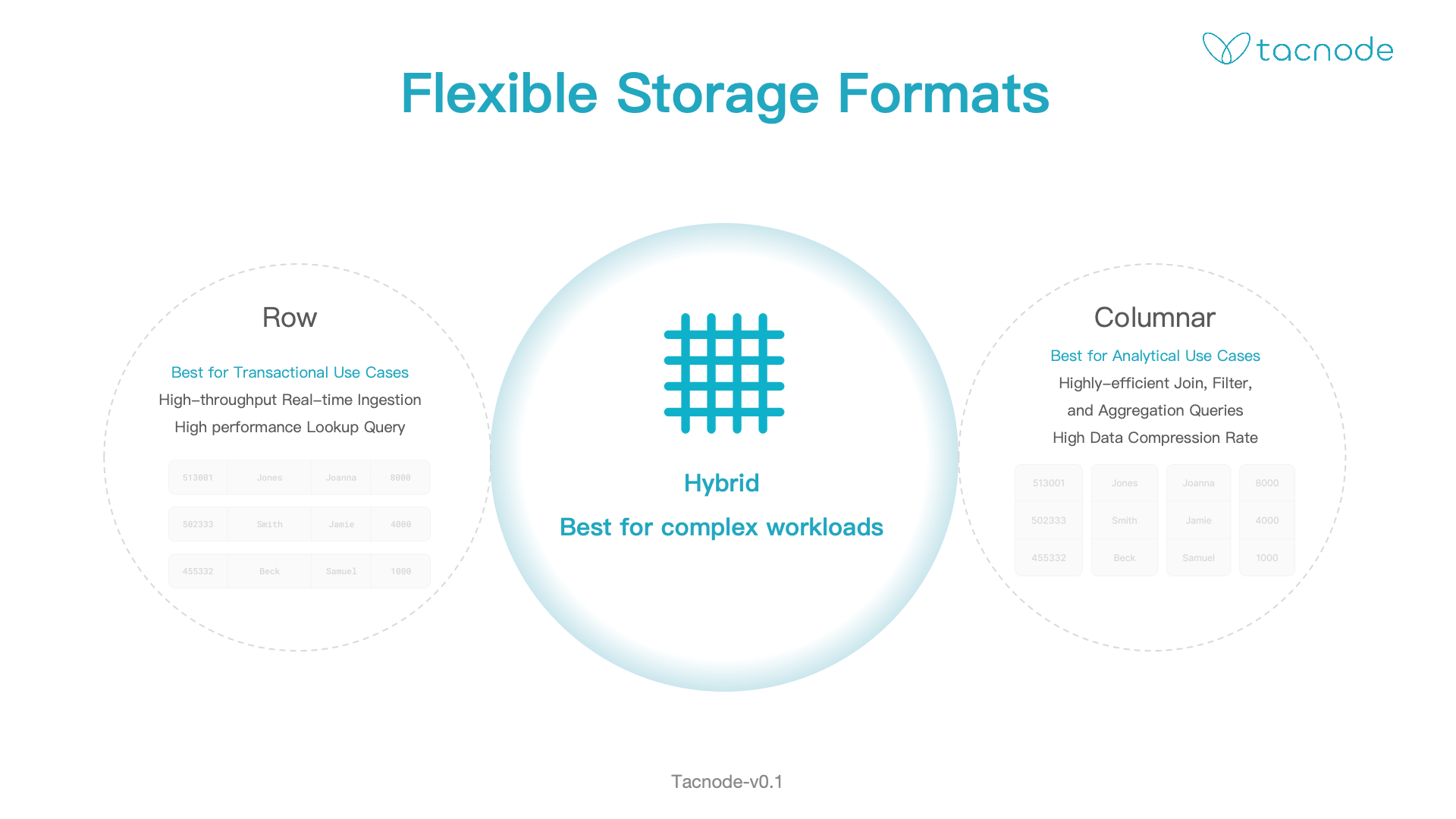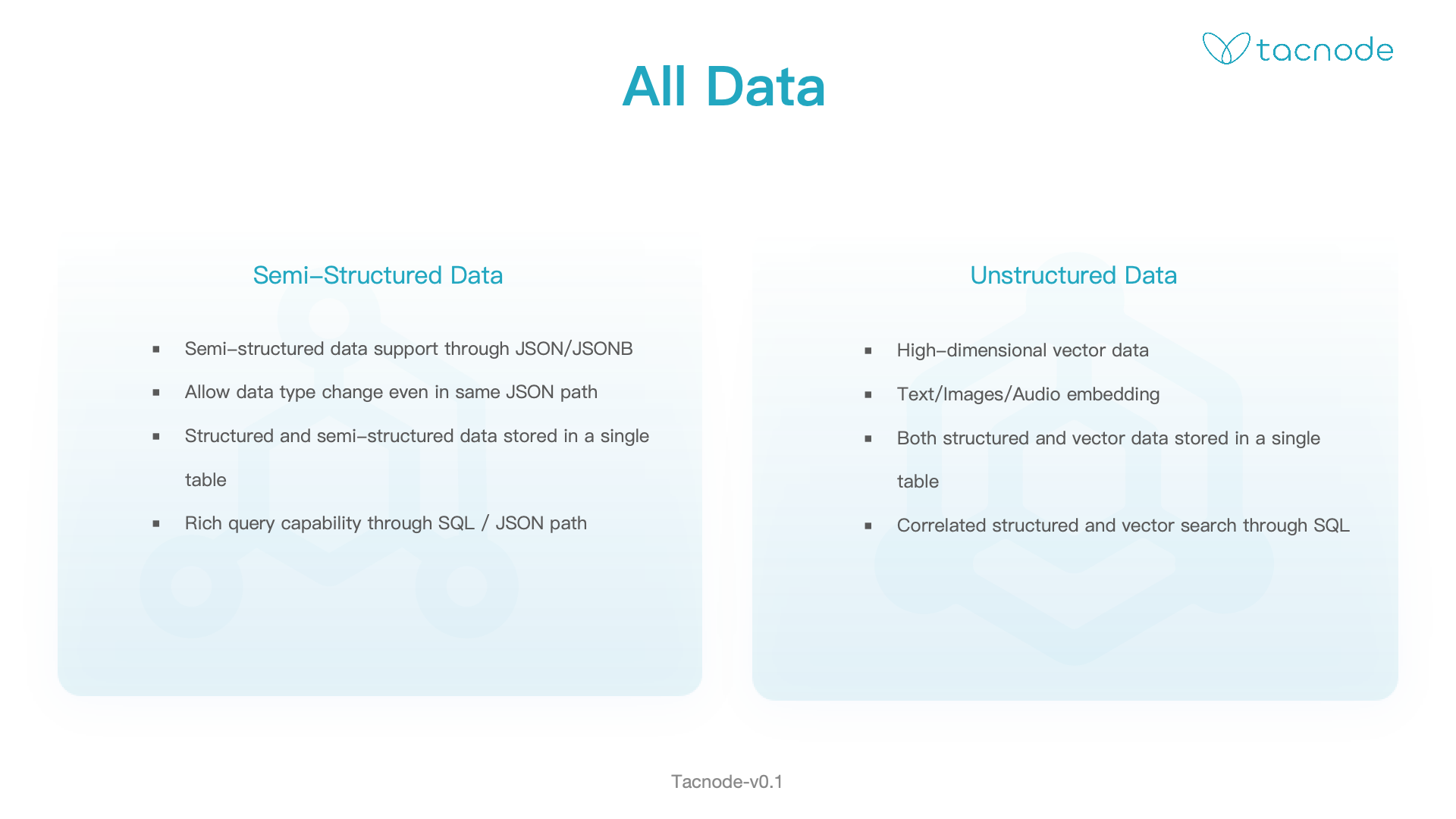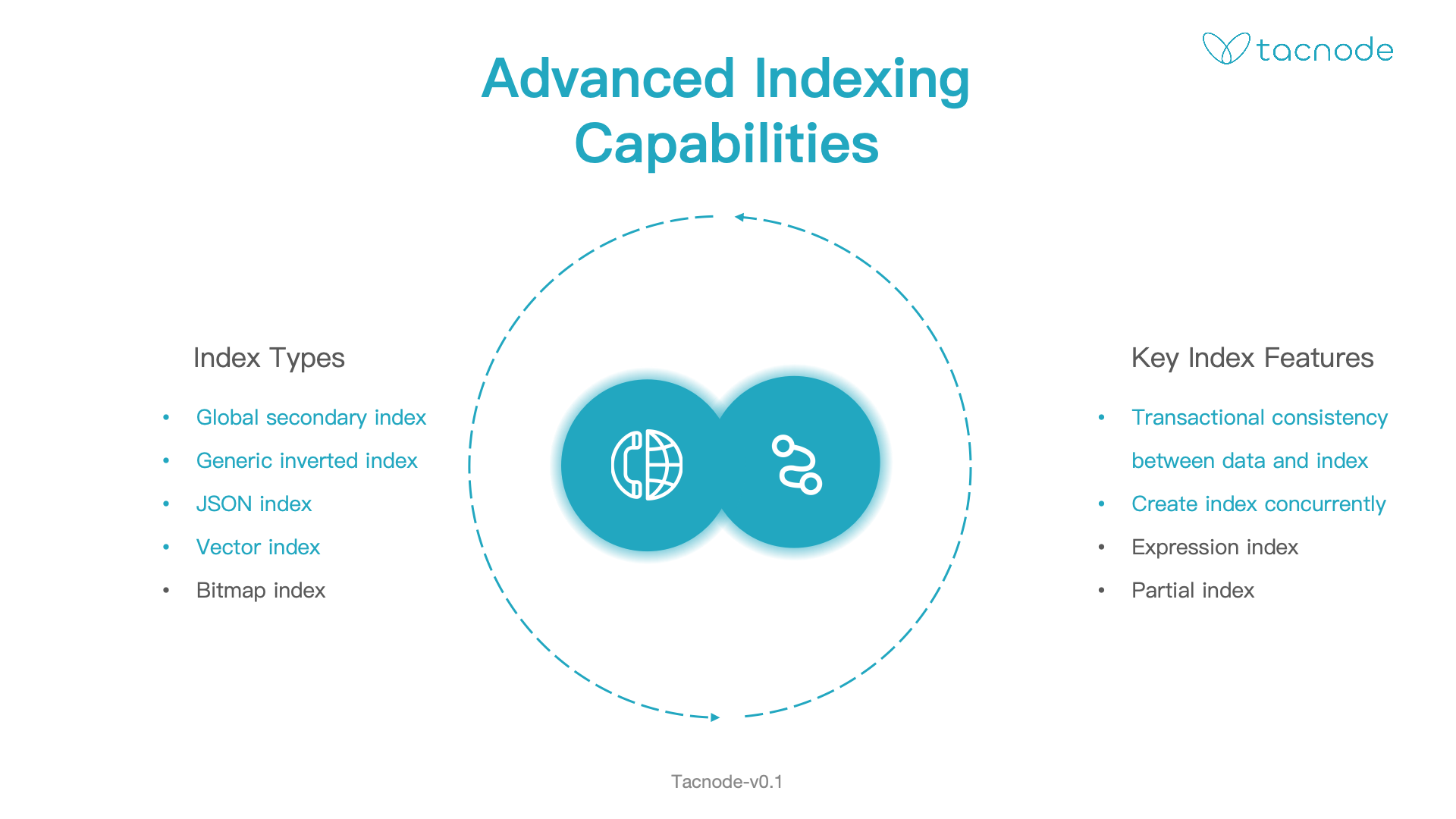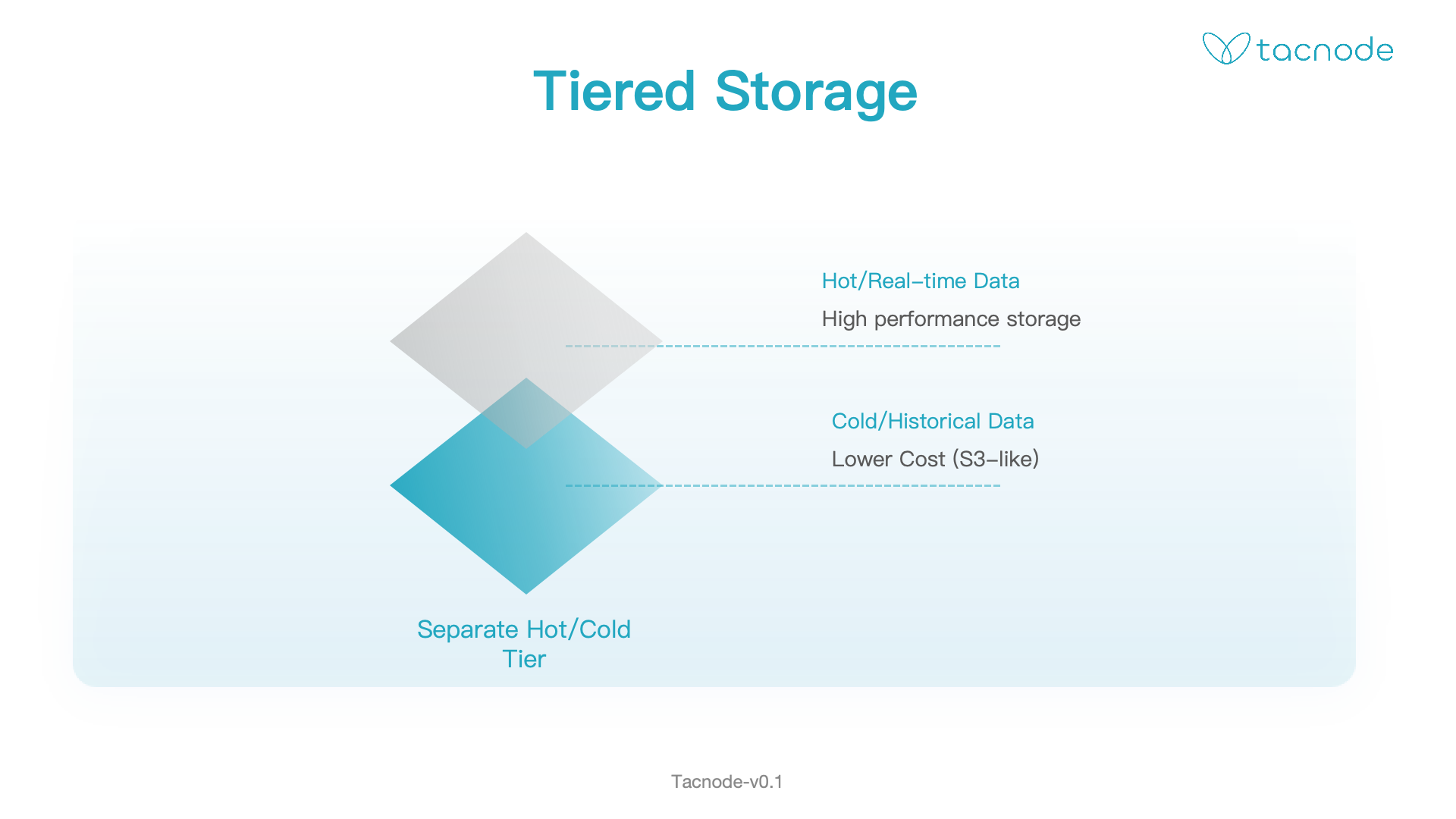All Data
Tacnode efficiently and cost-effectively stores all data by utilizing the latest advancements in storage technology and generating various indexes for that data.
Flexible Storage Formats
Structured data can be organized in either row or columnar formats, each with its own set of advantages and disadvantages. Most database systems use a row storage format, which involves organizing all data within individual rows continuously. This format is particularly beneficial for transactional scenarios, as it allows for efficient real-time writing and high-performance point queries. Conversely, most data warehouse systems use a columnar storage format, which organizes all data within the same column. Columnar storage is ideal for analytical scenarios, supporting efficient multi-dimensional filtering and aggregation while achieving a higher compression rate. This compression effectively reduces query input/output (I/O) and enhances the performance of complex queries.

Tacnode supports both row and column storage, enabling users with transactional and analytical needs to utilize hybrid storage. This method combines the benefits of both types, excelling in HTAP (Hybrid Transactional/Analytical Processing) situations. The optimizer evaluates the query to select the most efficient access method.
All Data: Structured, Semi-Structured, Unstructured Data
In addition to structured data, Tacnode supports semi-structured data through JSON and JSONB (Binary JSON, compressed, column-based, indexed) types. JSON is a hierarchical data description method that organizes data into a tree-structured document format, flexibly expressing semi-structured data. Users can store both structured and semi-structured data in the same table and efficiently perform joint filtering. Tacnode provides robust query capabilities through JSON PATH, meeting nearly all business query requirements for semi-structured data. Users can use SQL and JSON PATH simultaneously to perform complex joint queries on structured and semi-structured data.

Tacnode has added support for high-dimensional vectors to better handle unstructured data and introduced the Vector data type. Users can store embedded vectors of images, text, audio, and video in the database. They can also store structured, semi-structured, and vector data in the same table and use SQL to perform various complex queries.
Tacnode effectively stores and processes structured, semi-structured, and unstructured data, giving unstructured data a new structure in the form of embedded vectors.
Advanced Indexing Capabilities
Tacnode offers comprehensive indexes to enhance query efficiency.

Global secondary index: If a user needs to search for a record by a particular attribute, the global secondary index can quickly locate which machine stores the record and return it efficiently. The global secondary index allows the system to achieve high throughput requirements by adding machines. Without support for the global secondary index, every query would need to be sent to each machine, limiting throughput improvements and creating performance bottlenecks.
Generic Inverted Index: This index is convenient for keyword searches. The system supports JSON indexes, making JSON PATH queries very efficient. It also supports vector indexes for efficient similarity searches and a bitmap index for efficient filtering of structured data.
Concurrent index creation: Many data systems require users to lock tables when creating indexes, blocking all queries and negatively impacting online businesses. Tacnode introduces concurrent index creation, allowing users to create indexes without locking tables, thus not affecting the regular operation of online businesses.
A standout feature of Tacnode is its support for global secondary indexes. The system ensures that operations are "atomic" when adding, deleting, or modifying to maintain consistency between indexes and data. This means that changes to data and indexes must either succeed and be visible simultaneously or fail together without leaving an intermediate state. In a distributed system, where data and index information might reside on different nodes, achieving this guarantee is quite challenging, necessitating the implementation of distributed transactions. Fortunately, users do not need to delve into the complexities of this implementation as everything is handled transparently.
Tiered Storage
User data typically follows a distinct life cycle. Businesses primarily utilize the most recent data. As time progresses and data ages, it becomes less relevant, leading to fewer queries. At this stage, transferring this less frequently accessed historical data to more affordable cloud storage options, like S3, can significantly lower storage expenses.

Tiered storage is designed for this situation. Tacnode uses tiered storage to keep hot, real-time data in high-performance solutions like EBS, while cost-effective S3 is used for cold historical data. This tiered storage feature allows the system to manage real-time and historical data cost-effectively and efficiently.